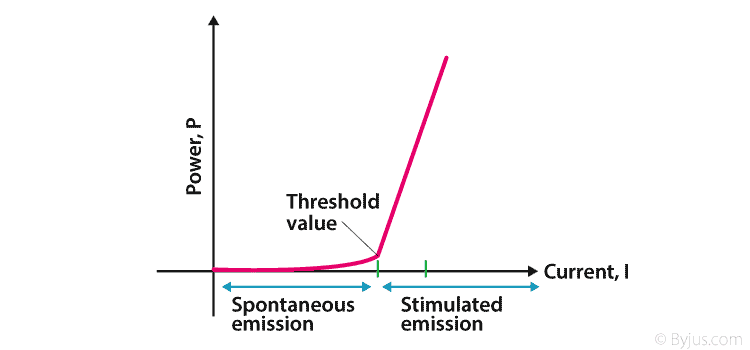What is Laser Diode?
A laser diode is a semiconductor that uses p-n junction for producing coherent radiation with the same frequency and phase which is either in the visible or infrared spectrum. It is also called an injection laser diode and, the technology is similar to that found in LED.
 Types of Laser Diodes
Types of Laser Diodes
The following are the types of laser diodes:
- Double heterostructure laser diode: Heterostructure is a material that is sandwiched between two n-type and p-type materials. Because of the presence of heterostructure material, this type of laser diode is called a double heterostructure (DH) laser diode. The main advantage of this diode is that the active region is used for better optical amplification.
- Quantum well laser diode: The quantum well is a very thin middle layer in the diode. The quantum energy is used for converting the electrons from higher energy to lower energy and is responsible for better efficiency.
- Separate confinement heterostructure laser diode: There are two additional layers along with three layers. These layers have a lower refractive index and the emission of light is also improved.
- Vertical cavity surface-emitting laser diode: In this type of laser diode, the optical cavity is along the axis of current flow.
Learn more about types of diodes here.
Characteristics of Laser Diode
The laser diode is characterized as follows:
- Monochromatic: An insubstantial width of radiated narrow light containing only a single color.
- Well-directed: In this type, the light is will be directed in a narrow beam. It is easy to launch through an optical fiber.
- Coherent: A light with a single wavelength emitted by LED with a wide wavelength.
- The important characteristic of a laser diode is its approach or the threshold. The laser diode doesn’t operate until a minimum power is applied. If the light is below its energy, then the emission is weaker than the threshold compared to the full energy.

Applications of Laser Diode
The following are the applications of laser diode:
- Consumer electronics: This includes laser printers, CDs and DVD players, and fiber optic communication.
- Industrial applications: When it comes to industrial applications, laser diodes are preferred as it is a source of a high-intensity laser beam and used for cutting, drilling, welding, etc.
- Medical applications: Laser diode is used for the elimination of unwanted tissues and tumors and also in dental medication.
- Scientific instrumentation: Instruments like spectrometer, range finders, contact-less measurements can be done with the help of laser diodes.
- The laser diode in telecom: Laser diodes with 1.3 μm and 1.55 μm bands are used as the main source of light in telecom and as the band changes laser diodes find application in optical amplification.
Learn about uses of diodes here.
Advantages of Laser Diode
The following are the advantages of laser diode:
- When laser diode is compared with other light-emitting devices, the operational power is less in the laser diode.
- The handling of these diodes is easy as they are small.
- The light generated by these diodes is of high efficiency.
Disadvantages of Laser Diode
The following are the disadvantages of laser diode:
- These diodes are expensive when compared to other light-emitting devices.
- The light generated by these diodes adversely affect the eyes.
Stay tuned with BYJU’S for more such interesting articles. Also, register to “BYJU’S – The Learning App” for loads of interactive, engaging Physics-related videos and an unlimited academic assist.





I have learnt a lot from these extracts.
Thank you so much.